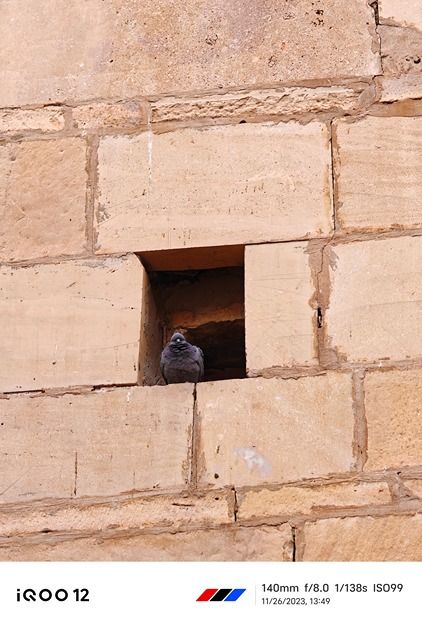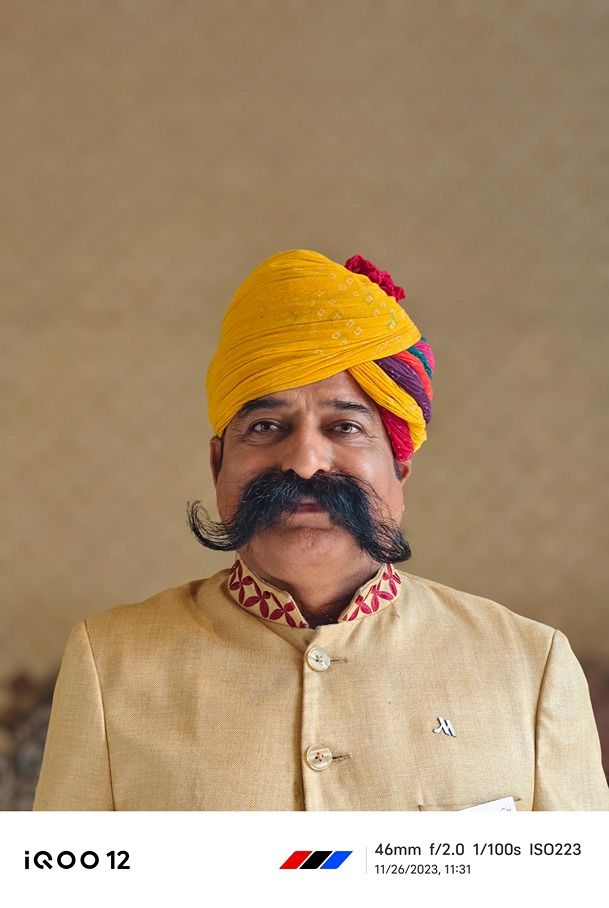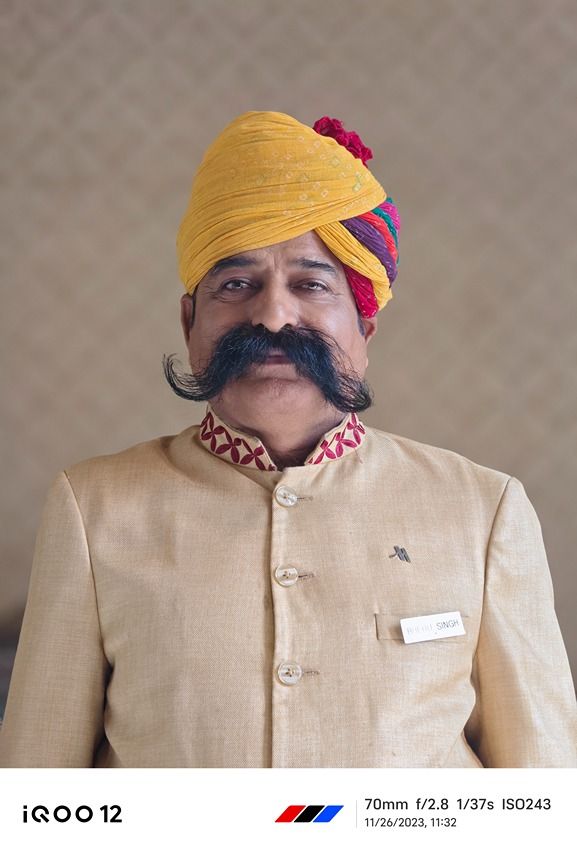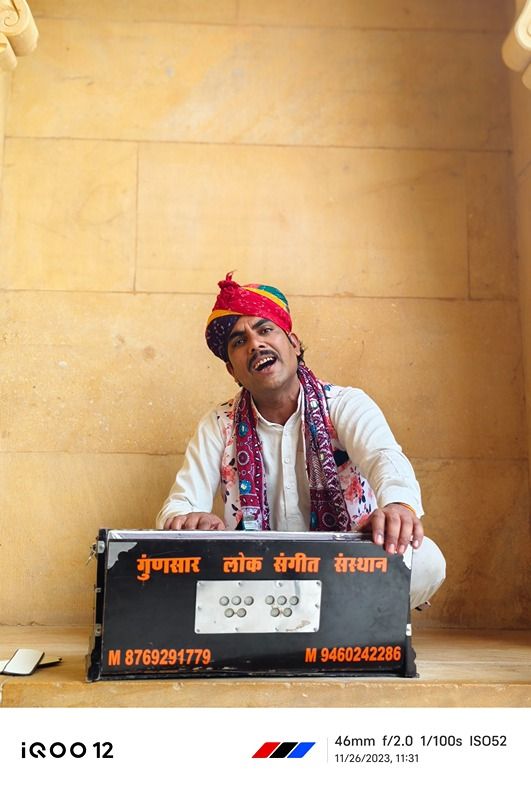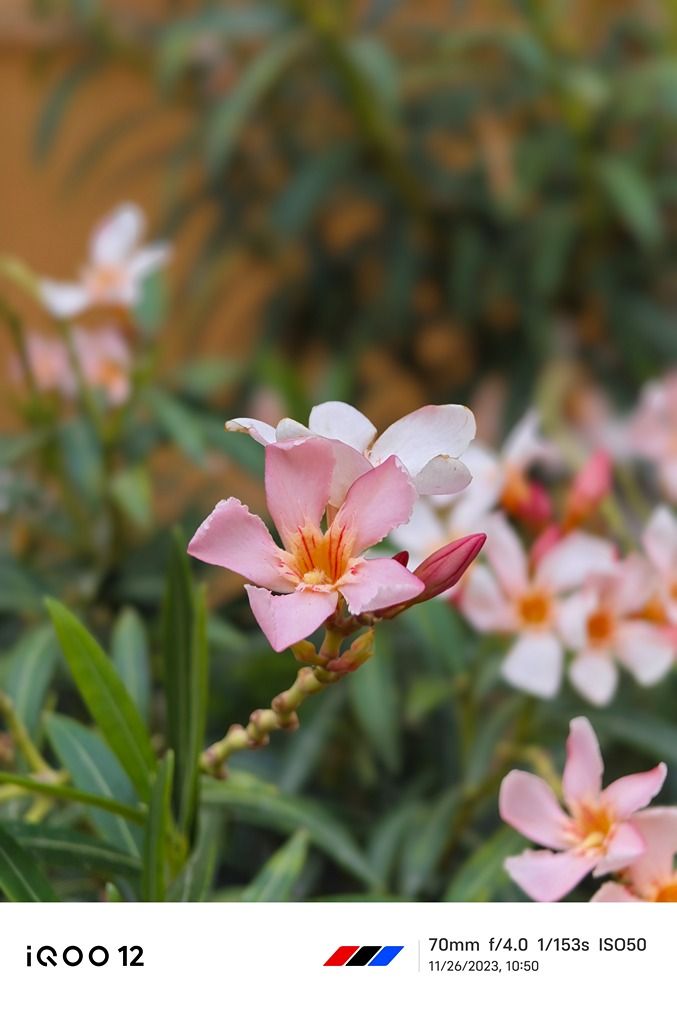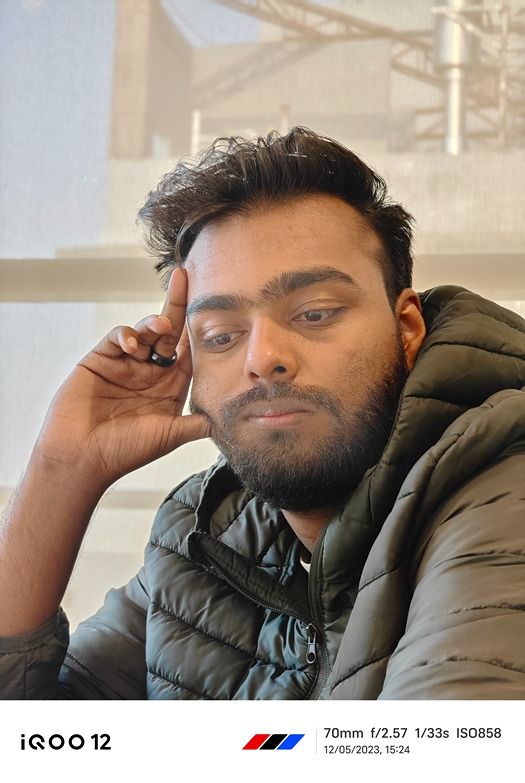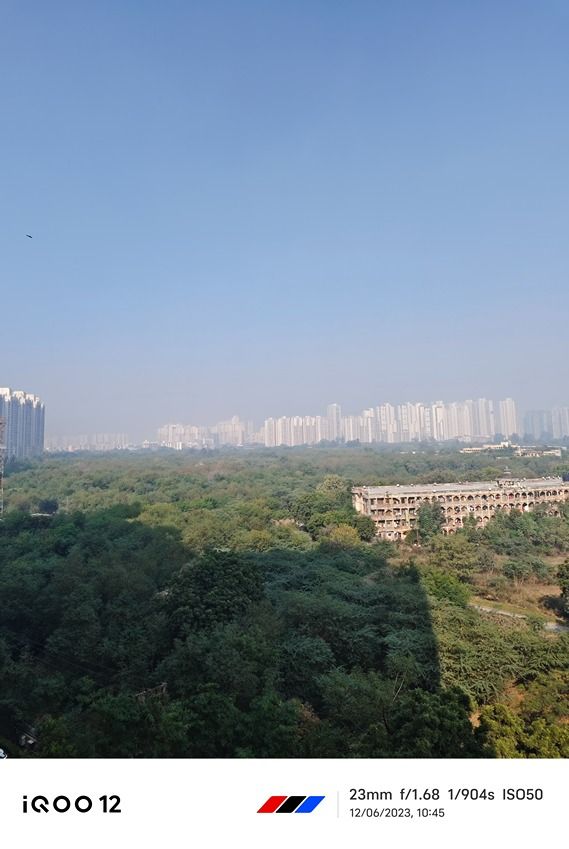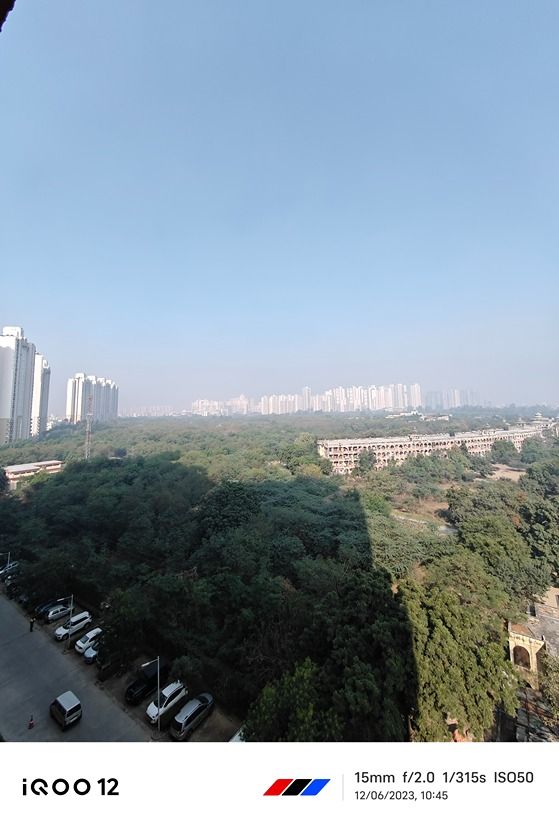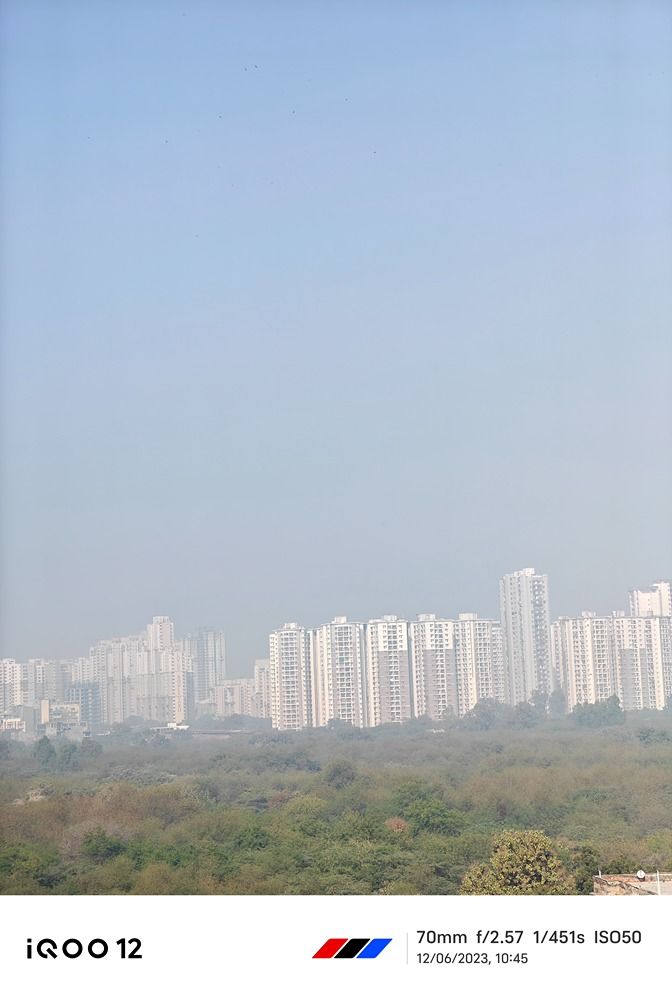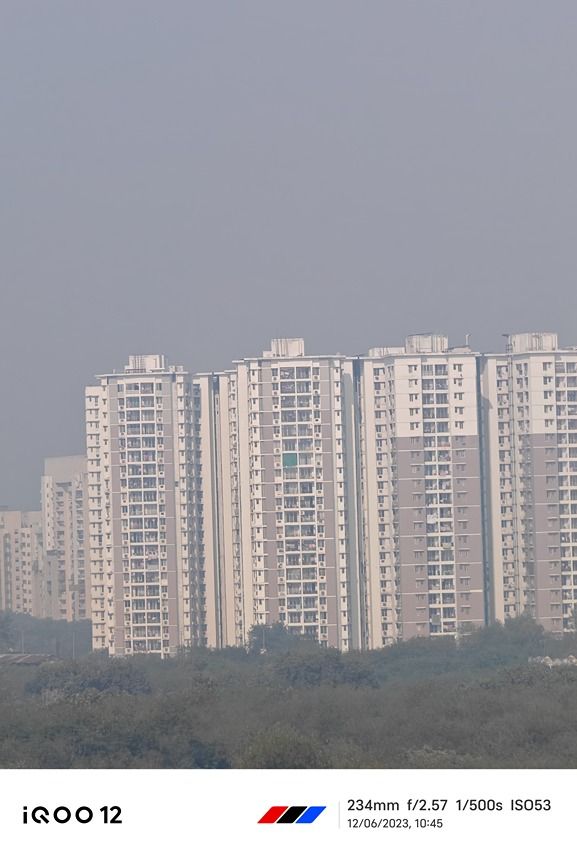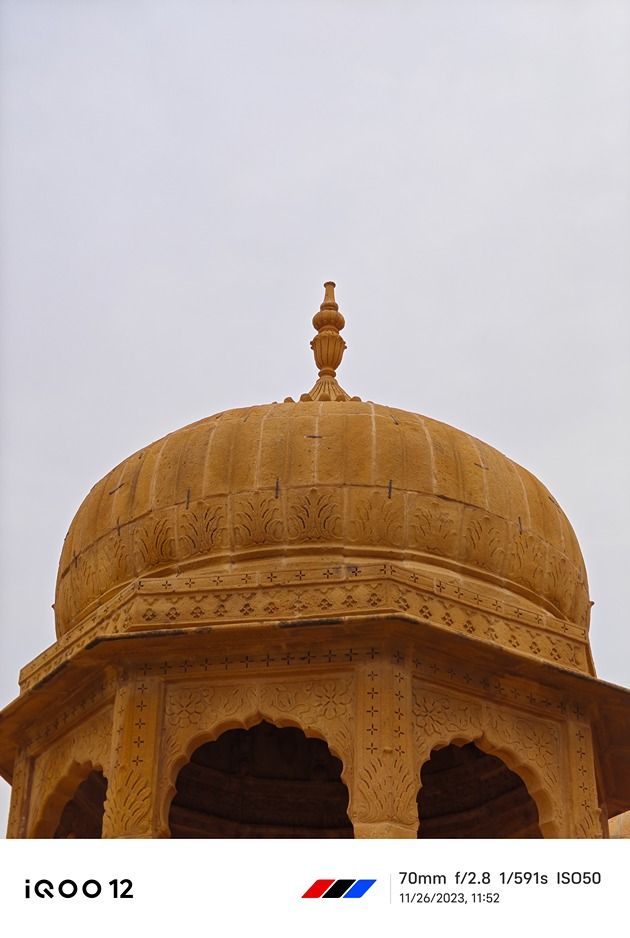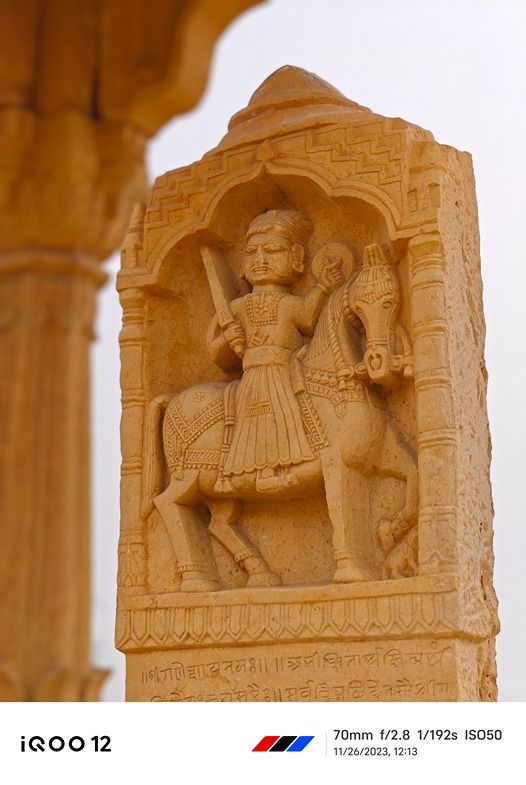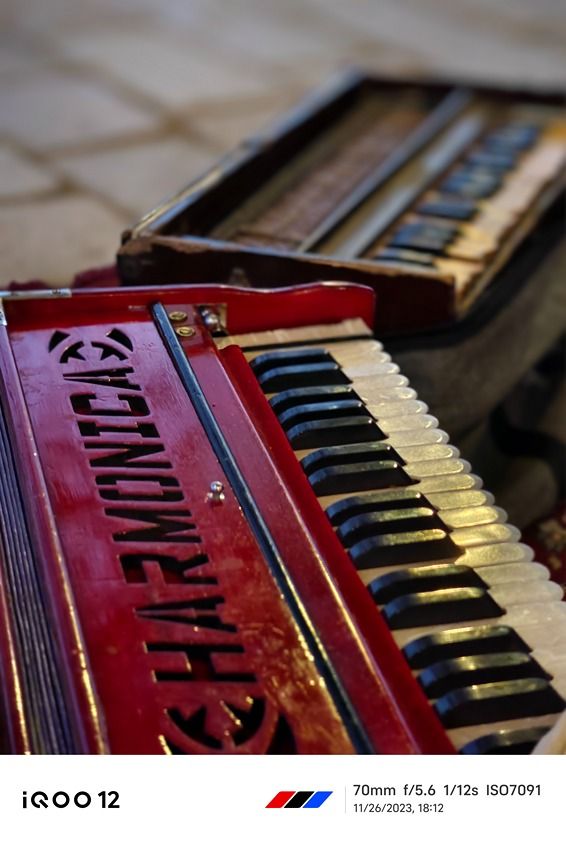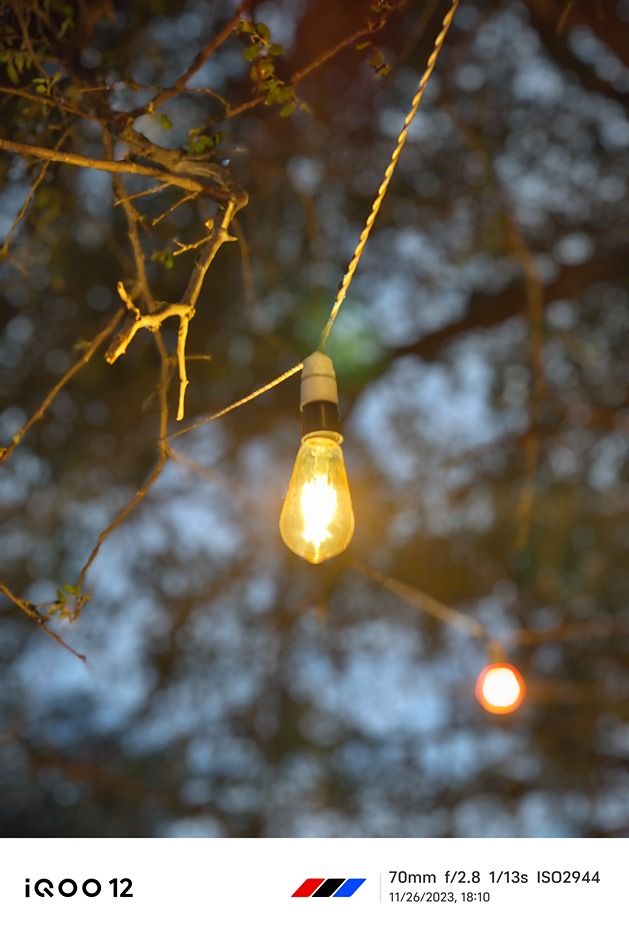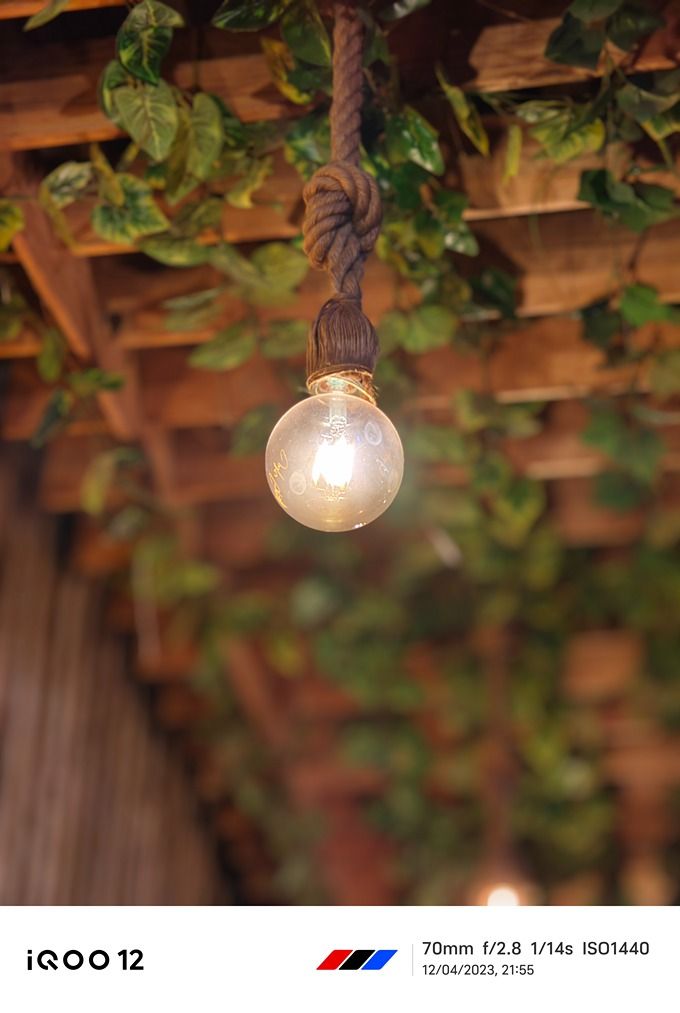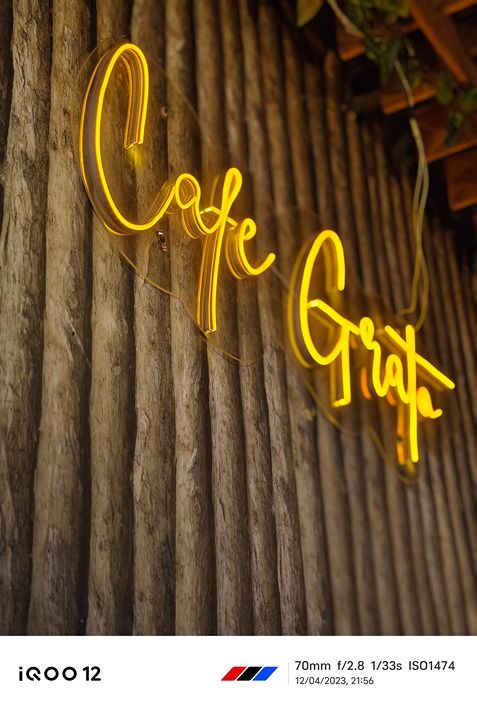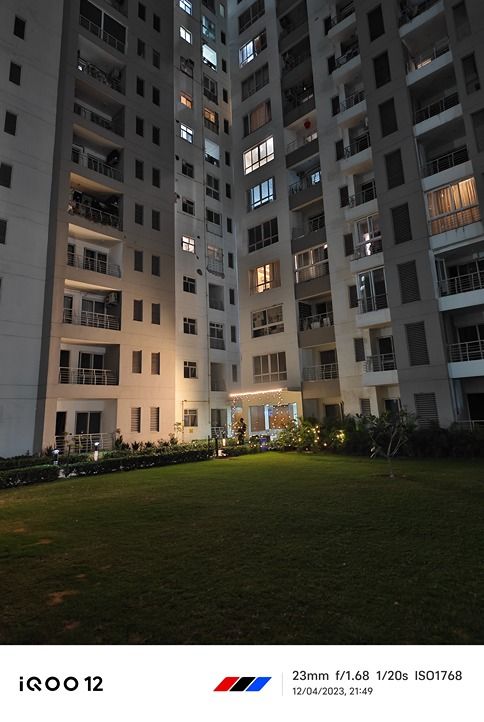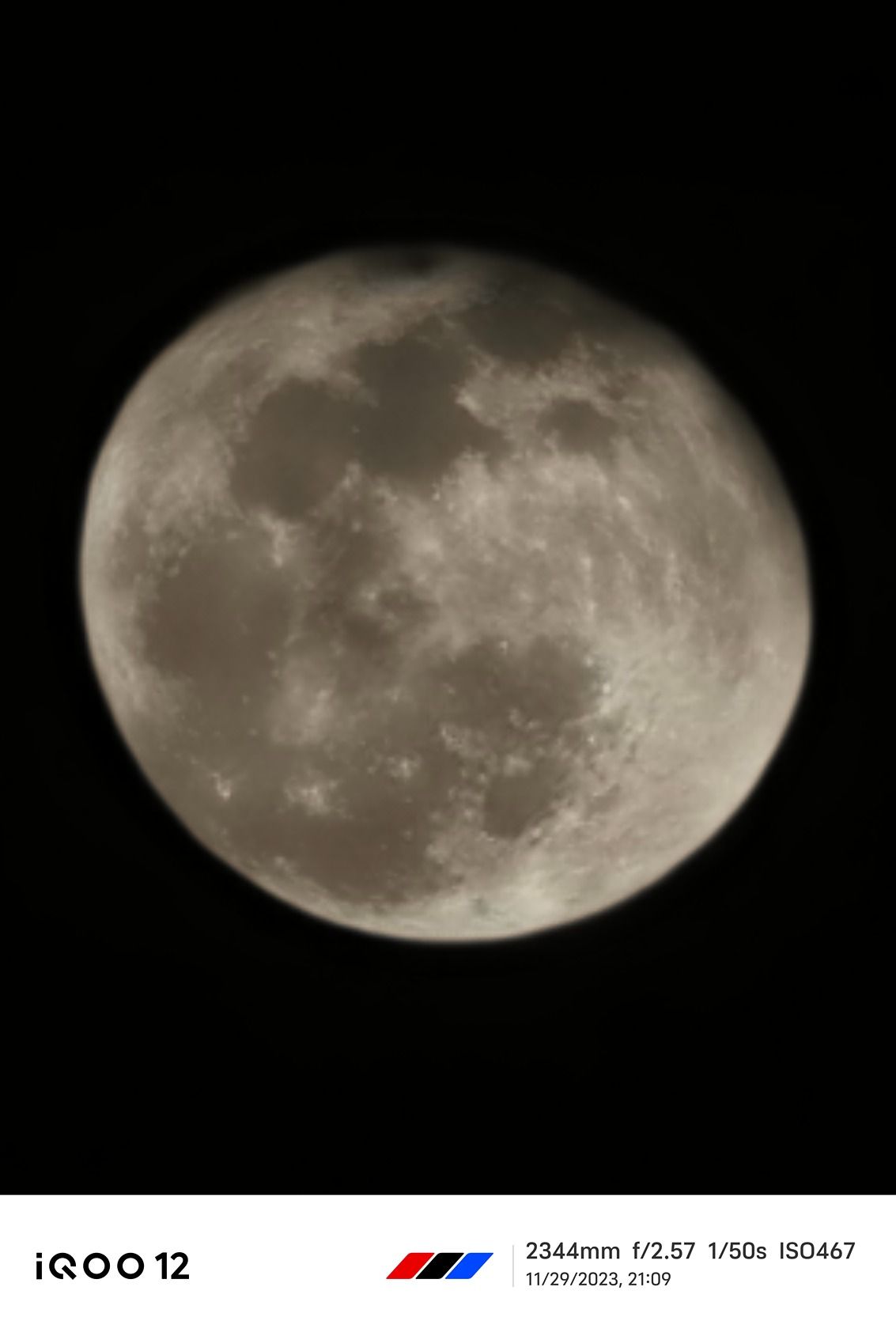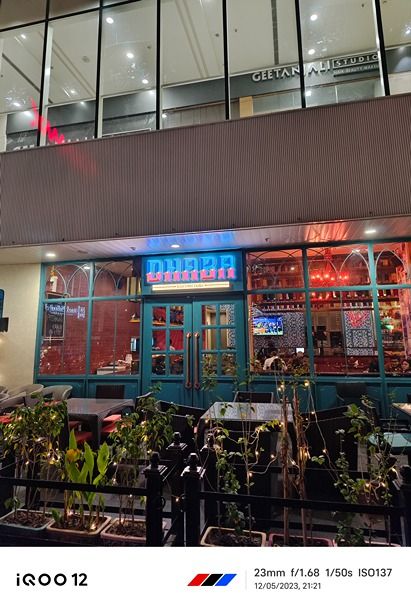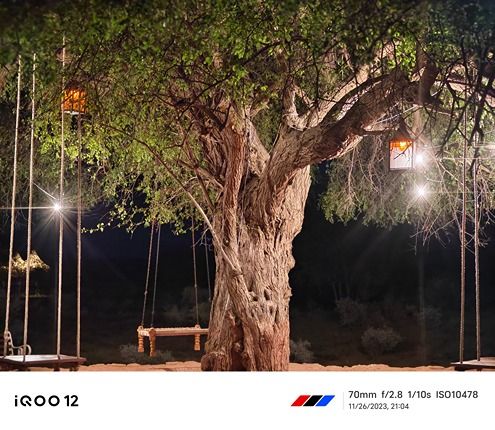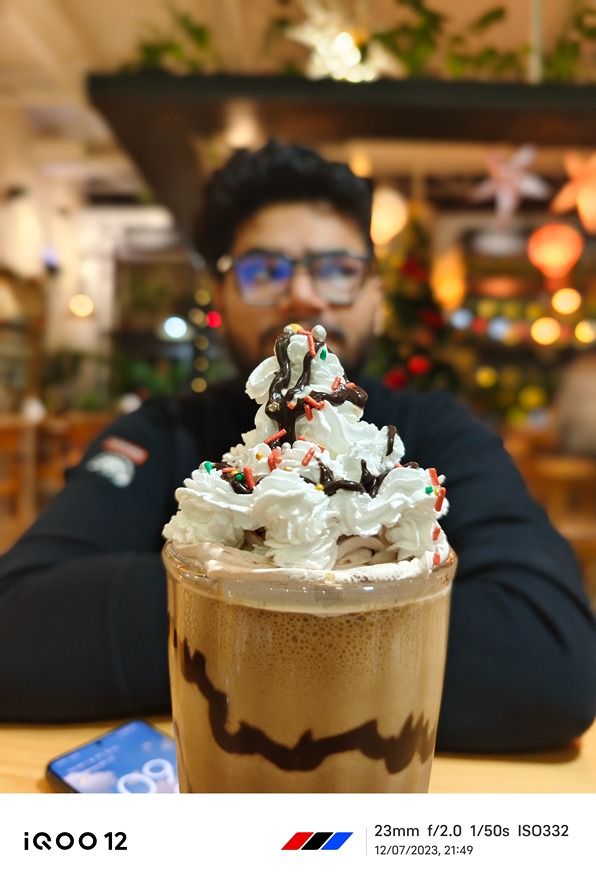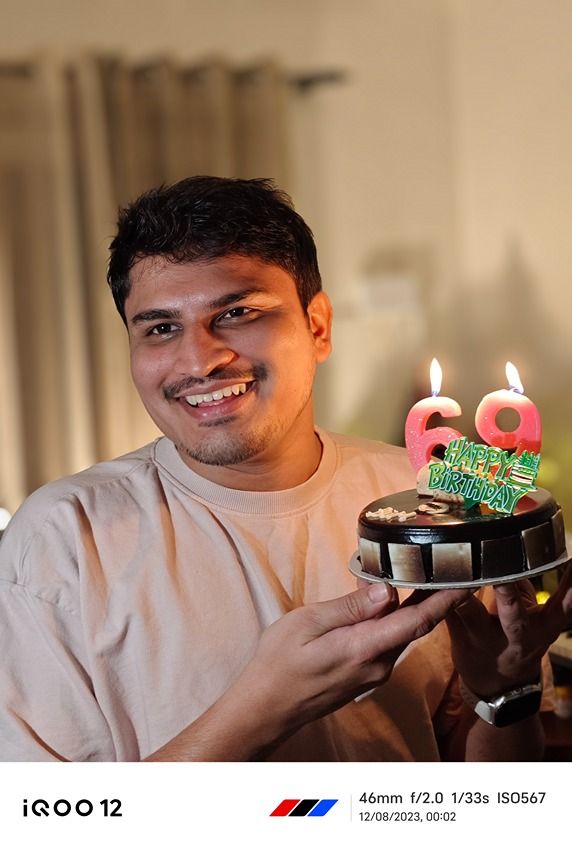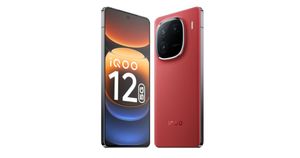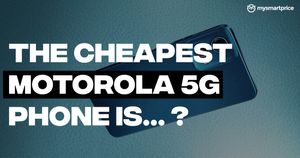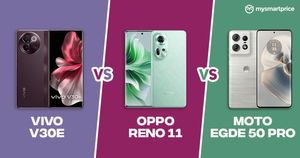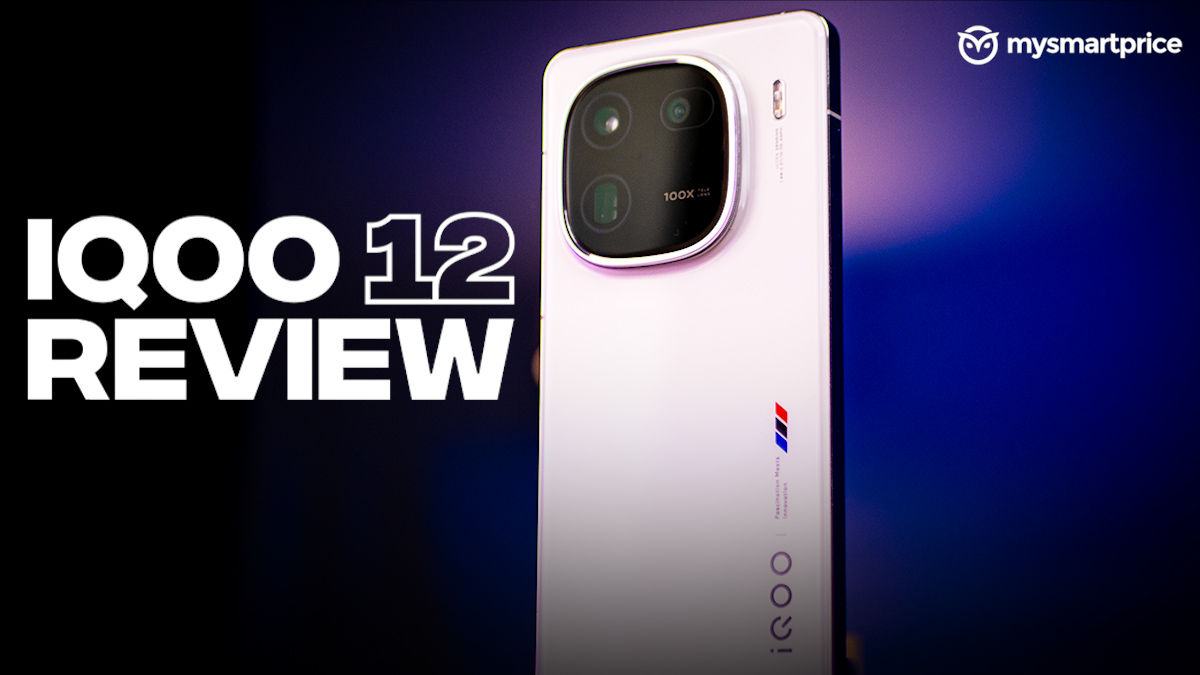
iQOO’s stance on providing a performance powerhouse is constant across its price spectrum. Its new offering, the iQOO 12 is the first smartphone in the whole-wide world to come with Qualcomm’s Snapdragon 8 Gen 3 processor. But that’s not where they want to stop – they want to take a step above performance this time around with a well-rounded feature list, including a stunning set of cameras. Seems like they have finally created a smartphone that’s not just targeted at gamers, but also an average flagship buyer. Does it make sense to buy one? Find out in my review.
iQOO 12
Rs 52,999What Is Good?
- Striking design
- Excellent display, 144Hz, HDR10
- Reliable battery life and fast charging speeds
- Raw performance on tap, good gaming capabilities
- No-bloat Android 14 experience
- Good camera setup
- Very well priced
What Is Bad?
- Very slippery back panel
- Inconsistency in the camera output
iQOO 12 Review: Design and build quality
Something I have always said in my previous iQOO reviews is that the design language is long due for a refresh. Thankfully, the iQOO 12 does get one, and it looks gorgeous in the Legend colourway. During my trip to Jaisalmer, at least three people in the local market approached me to ask for the name of the phone. The Alpha colourway also looks quite good but misses out on the signature tri-colour stripes of BMW M Motorsport.

| Design | Specifications |
| Back Material | Legend: Porcelain Enamel Glass, Alpha: AG Glass |
| Weight | 203 grams |
| Thickness | 8.1mm |
| IP Rating | IP64 |
The back panel is made out of Porcelain Enamel glass and is super glossy. However, it does not attract any smudges or dirt, which is good. But lord, is it slippery!? So much so that it fell from my bedside table and woke me up twice. And I take grudges around my sleep very seriously. To save yourself from such oopsie-daisy moments, consider slapping on a case.
The silver frames are flat and give a nice contrast to the phone. A slight chamfer at the corner helps with the grip.
The camera module is said to be inspired by portholes (not potholes, Mumbaikars can relax) which are circular windows used on the hull of ships to let light and air pass through. It does not protrude much, so table wobbles are limited. The outer radius of the module has a textured indent, which is an amazing fidget. While the overall design looks fantastic, it mildly reminds me of the Xiaomi 13 Pro.

The iQOO 12 only comes with an IP64 rating for water splashes and dust resistance. This is something that they had to compromise on for the price.
iQOO 12: Display review
The iQOO 12 is a downgrade in terms of display resolution when you compare it to its predecessor, which had a 2K display. You also get to switch to a lower resolution output, to save some battery — both support high refresh rates. iQOO 12 is still one of the few phones to provide a 144Hz display, and it is quite smooth in daily use. Much like the OnePlus Pad, which had a 144Hz panel, the iQOO 12 also does not run at full capacity when scrolling through the UI.

| Display | Specifications |
| Size | 6.78-inch |
| Type | LTPO AMOLED |
| Resolution | 2800×1260 |
| Refresh rate | 144Hz |
| Peak brightness | 3000 nits |
Legibility under direct sunlight was not an issue for the iQOO 12, with the maximum brightness reaching about 723 nits, as per our tests. You also get enhancements for increased picture saturation and contrast, along with options for MEMC and super-resolution.

The iQOO 12 comes with Widevine L1 certification out of the box, so watching high-quality content on OTT platforms is not an issue. Besides, the display is HDR10+ compliant, and you get that on Netflix out of the box. The colours on the display are quite good when set to the standard preset.

iQOO also claims to have introduced a wet hand touch technology, which is said to help you use the phone when in the shower or with sweaty fingers. In my experience, this didn’t fully work, I was still struggling to scroll through the UI.
The stereo speaker setup on the iQOO 12 is loud with ample depth, giving a good experience for content consumption.
iQOO 12: Performance and software review
The iQOO 12 is the first smartphone to launch in India with Qualcomm’s latest and greatest — the Snapdragon 8 Gen 3. And, it’s a leap over the Snapdragon 8 Gen 2, on paper and benchmarks.
| Hardware | Specifications |
| Processor | Qualcomm Snapdragon 8 Gen 3 |
| RAM | 16GB LPDDR5X |
| Storage | 512 GB UFS 4.0 |
| AnTuTu v10 | 2002767 |
| Geekbench 6.1 | Single core – 2207, Multi core – 6651 |
| CPU throttling test | 78 per cent of its max performance |
| 3DMark (Wild Life Extreme Stress Test) | 4834 (Best loop score) |
| Software version | Android 14 based on FunTouch OS 14 |
| Connectivity details | Wi-Fi 6, Wi-Fi 7, Bluetooth 5.4, GPS, NFC |
The numbers above should help put things into perspective. In the AnTuTu v10 test, the iQOO 12 managed a whopping 43 per cent performance increase over the iQOO 11 (Review) from last year. You can see similar improvements in other benchmarks as well. The Snapdragon 8 Gen 3 seems like a very promising and powerful chip which will be the go-to choice for most flagships this year.

Daily life usage is a piece of cake for the iQOO 12, with no lags or stutters throughout my usage. Switching between demanding apps or even multi-tasking is handled easily. On the gaming front, the phone runs BGMI and Call of Duty: Mobile on the highest possible settings with ease. There was no hint of sudden lags or stutters, and 60fps gameplay was achievable.
You also get a bunch of gaming-centric features such as game frame interpolation and game super-resolution. The former can let you play the games at 144Hz, provided the game can natively run at 90fps, we couldn’t achieve this on BGMI. The latter is said to increase the resolution of the game, this wasn’t very evident, besides a few bumps in contrast and saturation of the image.
While there were concerns about the heating, the iQOO 12’s vapor chamber cooling managed it well.
The iQOO 12 runs on FunTouch OS 14, based on Android 14 —making it the first non-pixel device to come with the latest from Android. And, the best part is it does not come with any sort of bloatware — our prayers have been answered. While the name may be different, the look and feel of the UI are generally the same, with minor adjustments to improve the overall experience. Customisation options are aplenty, with options to tweak a bunch of animations.

One significant quality-of-life improvement can be seen in the recent apps menu, where the entire layout can be changed with a click of a button, this gives a cleaner look, something you would often see on tablets. The iQOO 12 will get three years of OS updates and four years of security patches, which is good.
iQOO 12: Camera review
| Cameras | Specifications |
| Primary camera | 50-megapixel 1/1.3’’ Astrophotography Camera, OIS, f/1.68 |
| Secondary camera | 64-megapixel, 3x Periscope Telephoto, f/2.57, 100x Digital Zoom |
| Tertiary camera | 50-megapixel, Ultra-Wide Angle, FOV – 119° |
| Selfie camera | 16-megapixel |
| Video recording capabilities | Up to 8K at 30fps and 4K at 60fps |
The triple-camera setup gets a necessary and massive revamp over the iQOO 11, which gives it the flagship stamp. While astrophotography seems to be its unique point, we couldn’t test that in Delhi’s polluted areas. The periscope telephoto camera was a much-needed addition, and it has turned out to be my favourite. Overall, the iQOO 12 has a good and reliable camera setup.
The periscope camera is amazing for close-up shots, with good details and edge detection in portrait mode, but the colours can be a bit inconsistent at times. This inconsistency can also be seen in photos captured in dull lighting conditions.
It adds an artefact on the face which shines white, indicating the post-processing of the phone struggling with the lights. Speaking of which, it’s not a fan of bright light sources hitting the camera directly. Rest, low-light photos from the main camera give an excellent output and the noise levels are also almost non-existent. We’ve gone into more detail about the imaging in our iQOO 12 camera test.
iQOO 12 Review: Battery and charging
The iQOO 12 handles the battery and charging department with ease. The 5,000mAh battery inside managed to get a maximum of six hours of screen time.
| Battery capacity | 5,000mAh |
| Charging wattage | 120W |
| Charger in the box? | Yes |
| Screen-on time | 6 hours |
| Charging speed | 30 minutes |
The iQOO 12 never gave me battery anxiety, and this is also thanks to the charging speeds. The 120W adapter roughly takes half an hour to charge fully from the dead. And, if you are in a hurry, a 15-minute top-up will take you to 66 per cent, more than enough to last you till evening.
iQOO 12 Review: Verdict
iQOO does not seem to be in the shadow of other big players anymore, and the early adoption of the Snapdragon 8 Gen 3 proves that. It lacked some confidence in the camera and software department earlier, but that has been improved to an extent with the iQOO 12.
The design upgrade is much appreciated, despite it being extremely slippery and slightly resembling the Xiaomi 13 Pro. While the IP64 rating is not bad by any means, a better rating would have given lesser anxiety around water.
While we wait for other OEMs to come up with their rendition of the Snapdragon 8 Gen 3 devices —- if history is to be considered, the iQOO 12 might still top the charts in terms of performance. It’s the go-to device if gaming is on your to-do list.
The camera upgrades make it an all-rounder smartphone, but the image processing still needs some tweaking for it to be more consistent and reliable. That’s not to steal away anything from the setup, it still captures excellent shots both in daylight and low-light conditions.
The battery life, charging speeds, and no-bloatware UI make it a steal deal at this price.




